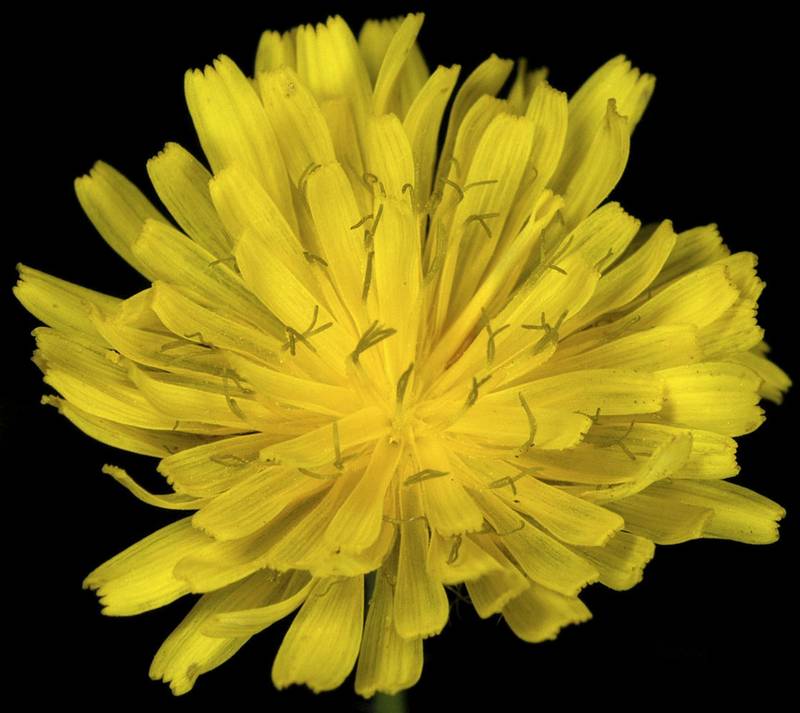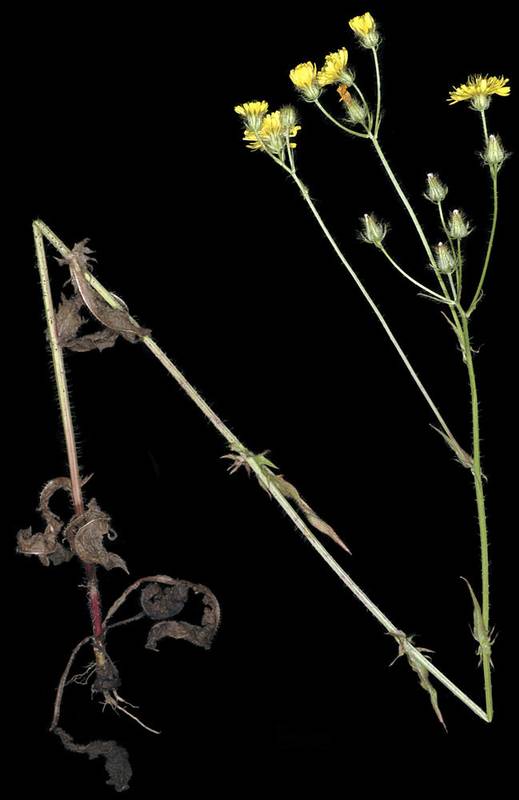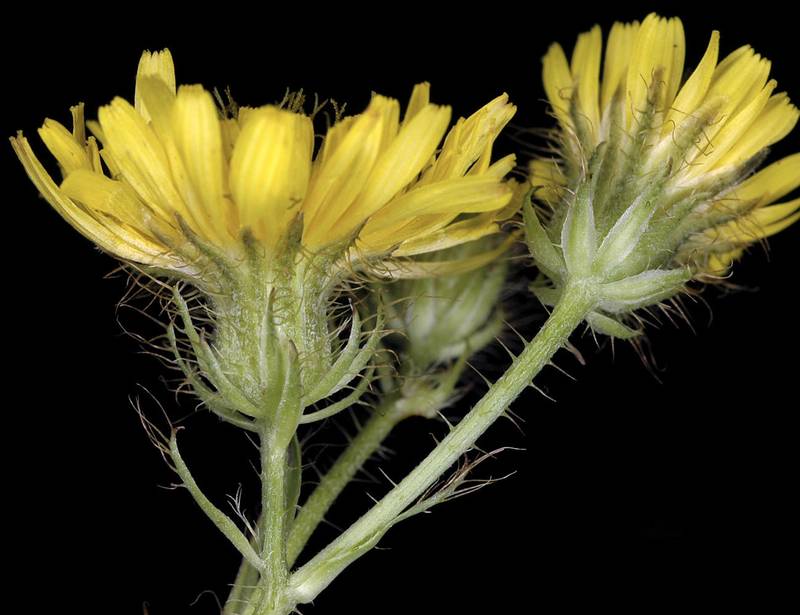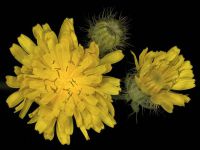Distribution: Occurring west of the Cascades crest in southwestern Washington; southwestern British Columbia to California, also in Montana and eastern U.S.
Habitat: Roadsides, fields, ditches, wastelots, and other disturbed open areas at low elevations.
Flowers: June-August
Origin: Introduced
Growth Duration: Annual
Conservation Status: Not of concern
Pollination: Bumblebees, bees, butterflies, flies, beetles, wasps, apomixis?
Annuals with shallow taproots, the stems single, 8-80 cm. tall, simple or sparingly branched, with coarse, yellowish bristles.
Leaves alternate, the basal petiolate, the blades oblanceolate to lyrate, 5-30 cm. long and 1-8 cm. wide, the margins dentate to pinnately lobed; cauline leaves lanceolate, the bases saggitate, the margins dentate or laciniate.
Inflorescence a panicle with 10-20 heads; involucral bracts 12-16, 6-7 mm. long, strongly keeled and thickened, covered with coarse bristles, the margins green to yellowish, the tips acuminate, with 10-14 linear bractlets 2-4 mm. long; flowers 10-20, the corollas yellow, strap-shaped, 8-10 mm. long; pappus white, fine and soft.
Achene reddish-brown, spindle-shaped, 3-5 mm. long, beaked.
Publication: Arch. Bot. (Leipzig). 1(2): 1. 1797.
PNW Herbaria: Specimen records of Crepis setosa in the Consortium of Pacific Northwest Herbaria database
WA Flora Checklist: Crepis setosa checklist entry
OregonFlora: Crepis setosa information
E-Flora BC: Crepis setosa atlas page
CalPhotos: Crepis setosa photos








